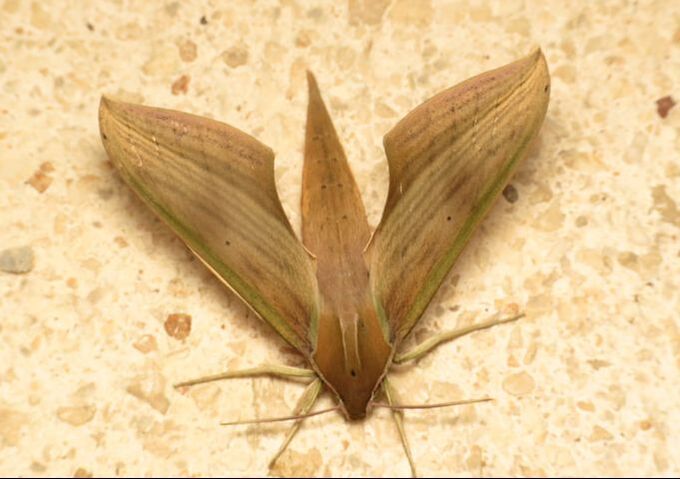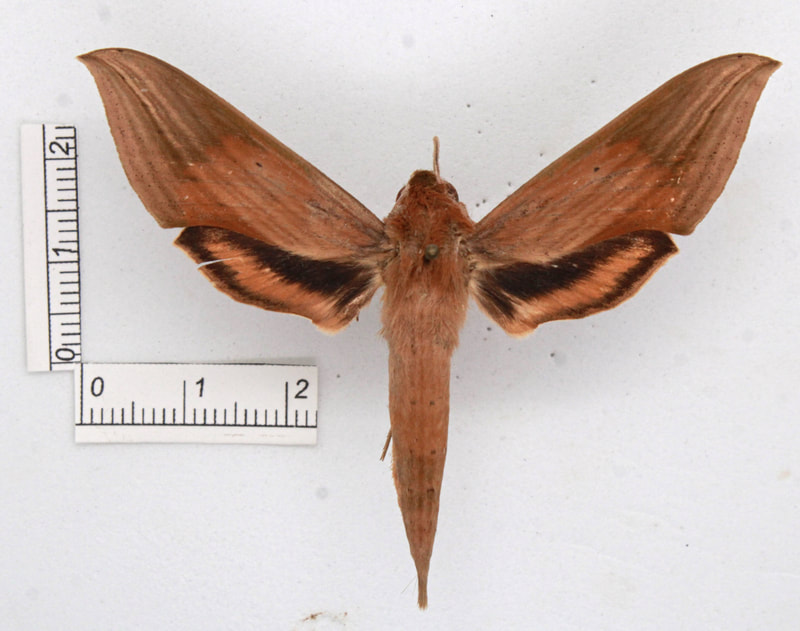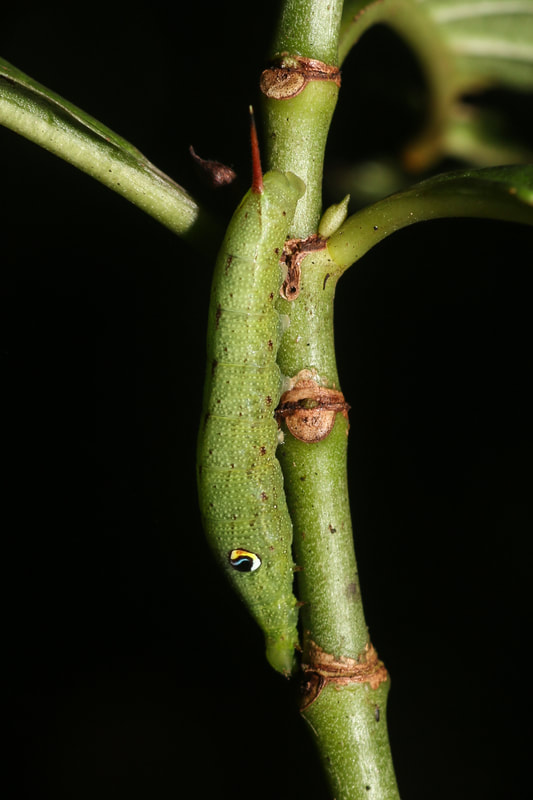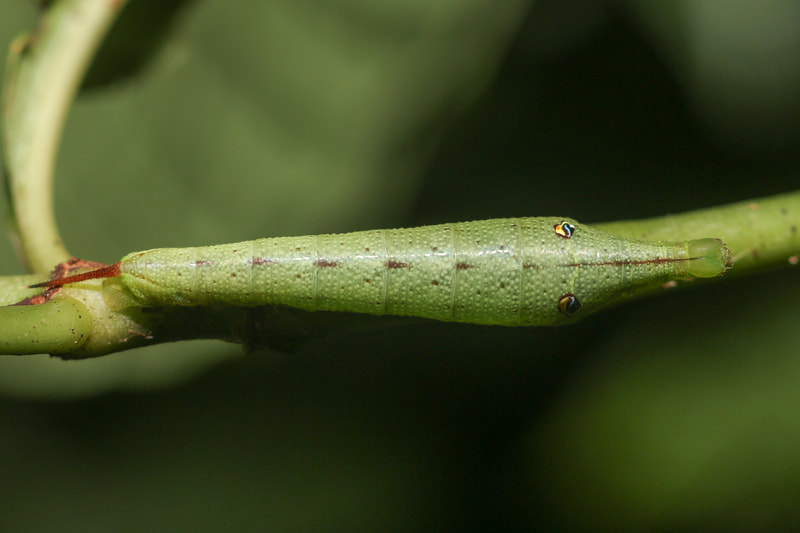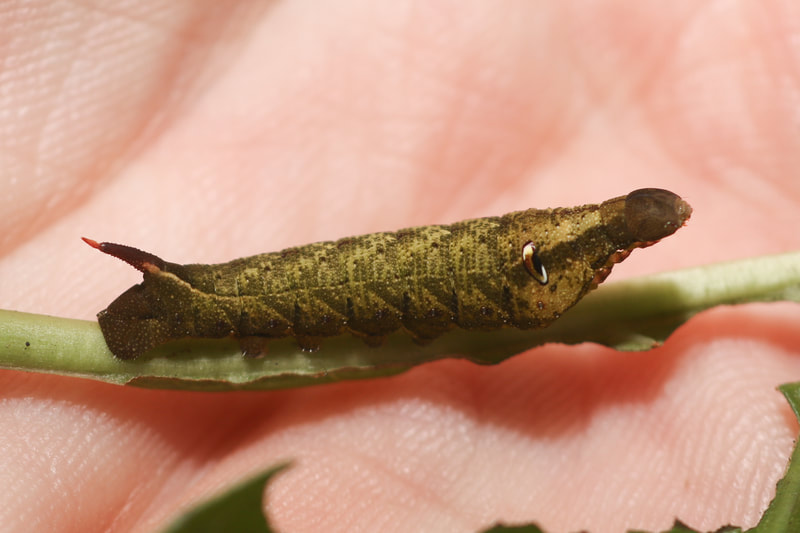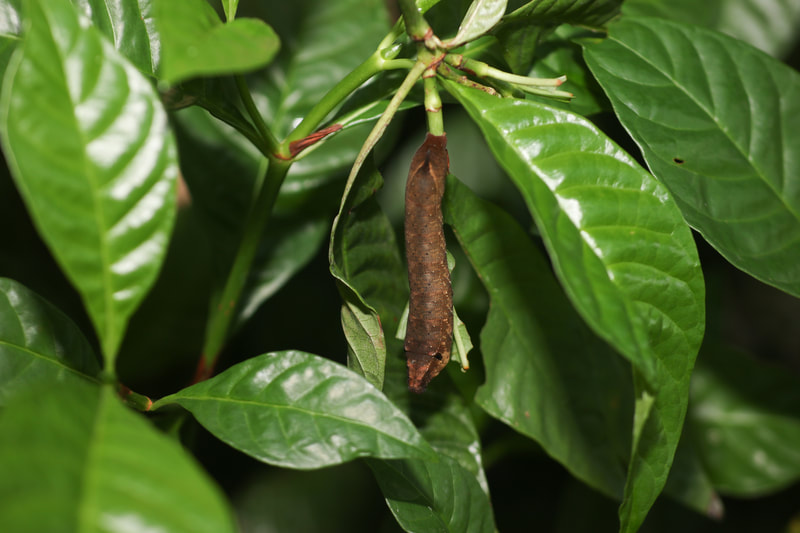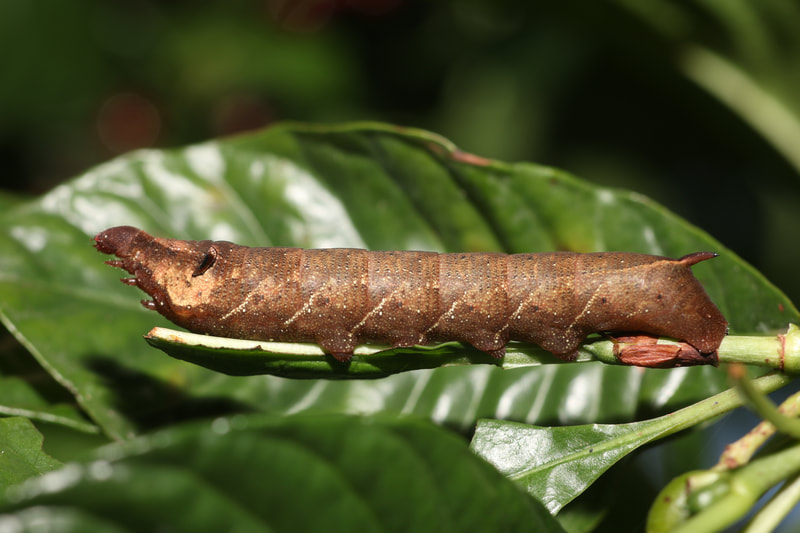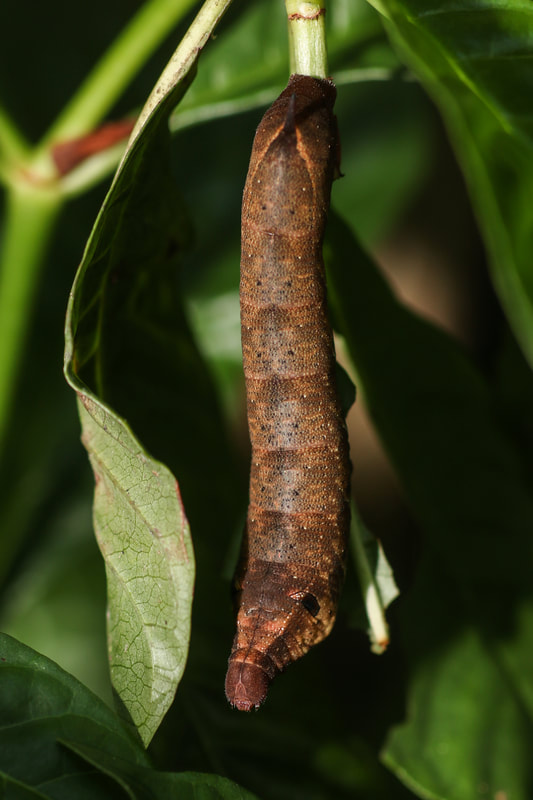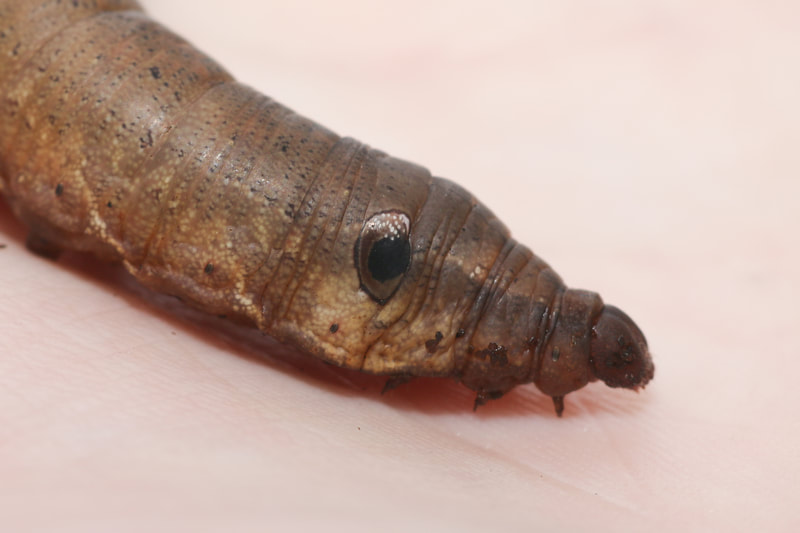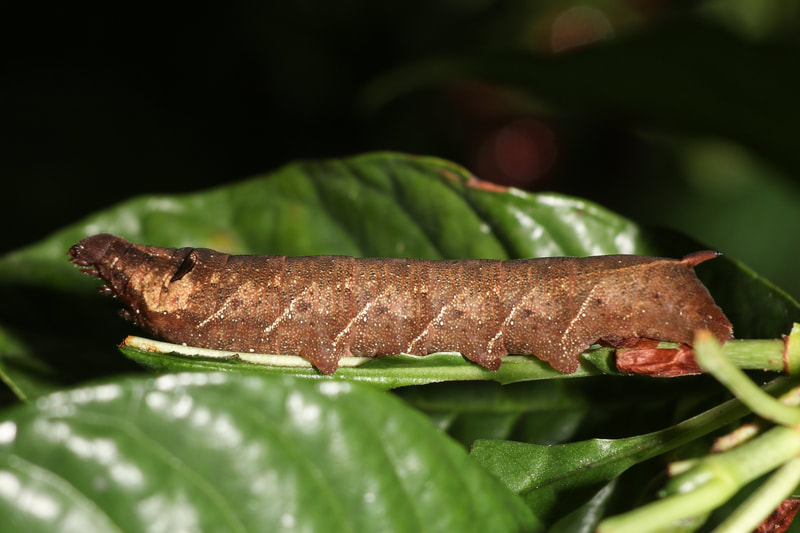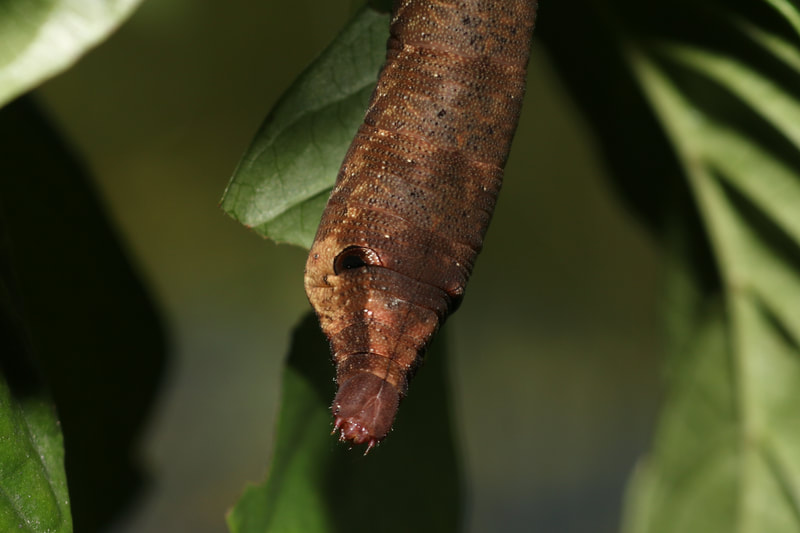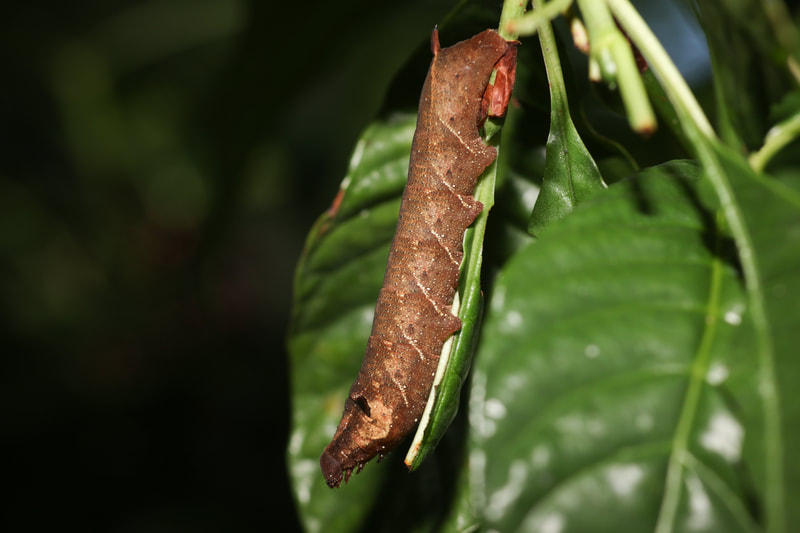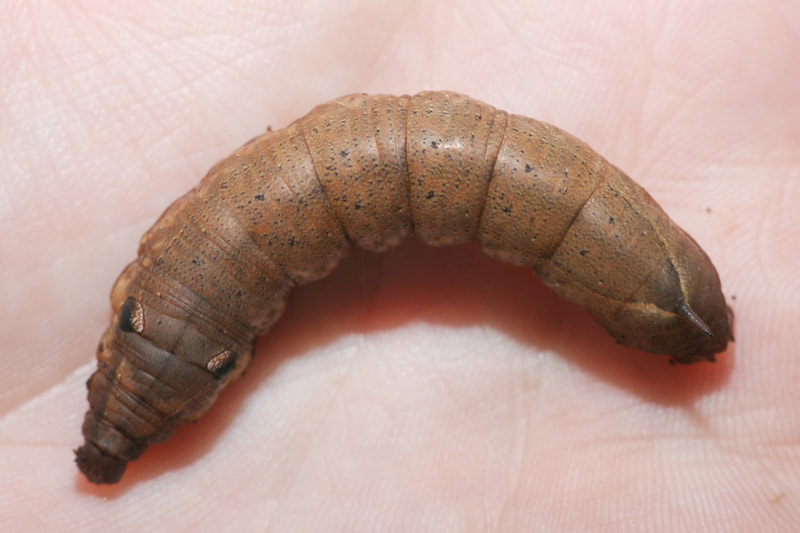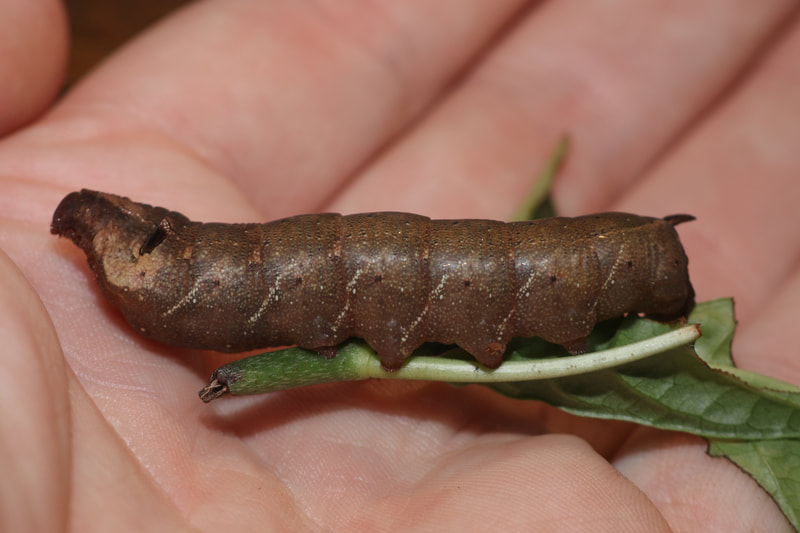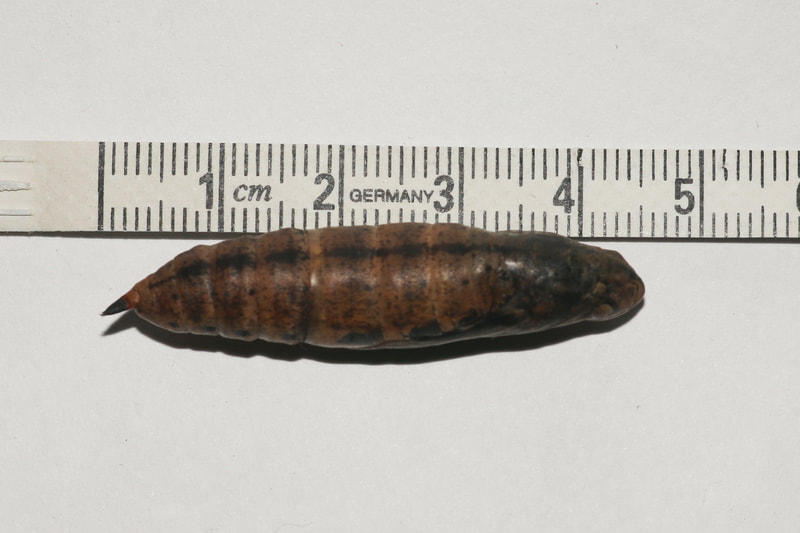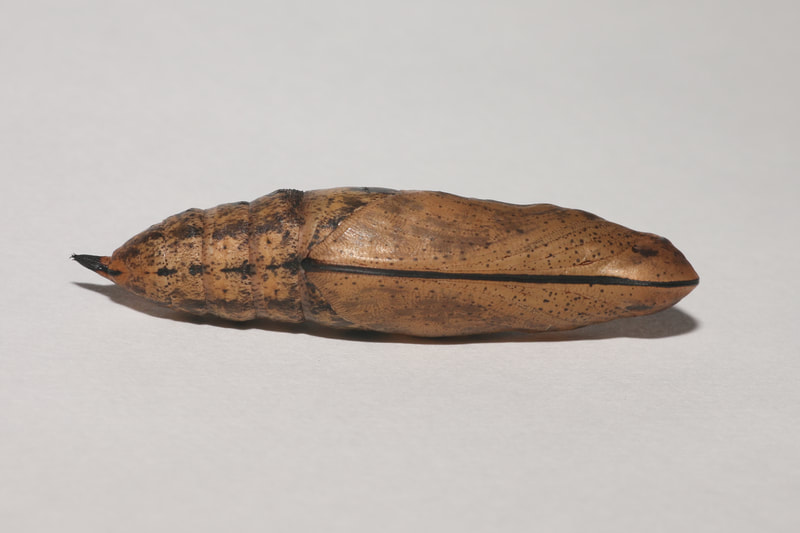|
Common Name: Libya Sphinx
Ecology and Life History: This moth is active year-round in Central and South America. It is a rare stray in the USA being recorded in the Summer and Fall months. This species is highly attracted to light with both males and females coming to artificial lights. This species is not sexually dimorphic, though males are smaller than females. Eggs are laid on the leaves and stems of hostplants. Younger larvae likely hide on the mid-vein on the underside of the leaf. Older larvae may descend the plant during the day to hide. Like many other Sphingidae, this species has two larval color forms, a green and a brown form. Habitat and Searching for Larvae: Another specialist of Rubiaceae plants. This species particularly likes Wild Coffee (Psychotria). Larvae can be found virtually anywhere on the plant. Younger larvae may prefer new growth, whereas older larvae likely descend the plant during the day to hide. This is a moth of subtropical and tropical habitats. Larvae can be found virtually year-round in Central and South America. In the USA, it likely does not breed. In the unlikely case it does, larvae should be looked for in the Summer and Fall months. While it has not yet been shown, this species almost certainly fluoresces under UV light like others in the genus. Rearing Notes: {COMING SOON} |
Adult Description: This is a medium sized orange-brown moth with forewings measuring 32-36mm in length (2). Superficially, it resembles Xylophanes tersa. This species has less black streaking on the forewings than X. tersa. Additionally, this species has a small black discal spot that is absent in X. tersa. The hindwings of this species are black with an orange band. Xylophanes tersa has hindwings that are black with yellow triangular markings forming a line.
Larval Description: L5: This larva comes in two color forms, green and brown. Both forms have a pair of false eyespots on the second abdominal segment. In the green form, these eyespots are quite convincing with a blue iris. In the brown form, the eyespots are much less brightly colored. Both forms are quite plainly marked with no abdominal streaking. The caudal horn in the green form is green with some orange coloration on the dorsal side, it is thin and points straight back. The brown form has a brown caudal horn with some reddish coloration toward the base, the horn is also thin and sticks straight backward. Hostplants Click here to load this Caspio Cloud Database
Cloud Database by Caspio |
The gallery to the left contains photos of Xylophanes libya adults. The data for each photo can be found by clicking on it. If you have a photo that you would like to submit to us, please contact us using the link at the bottom of the page.
The gallery to the right contains photos of Xylophanes libya larval and pupal stages. The data for each photo can be found by clicking on it. If you have a photo that you would like to submit to us, please contact us using the link at the bottom of the page.
The gallery to the right contains photos of Xylophanes libya larval and pupal stages. The data for each photo can be found by clicking on it. If you have a photo that you would like to submit to us, please contact us using the link at the bottom of the page.
